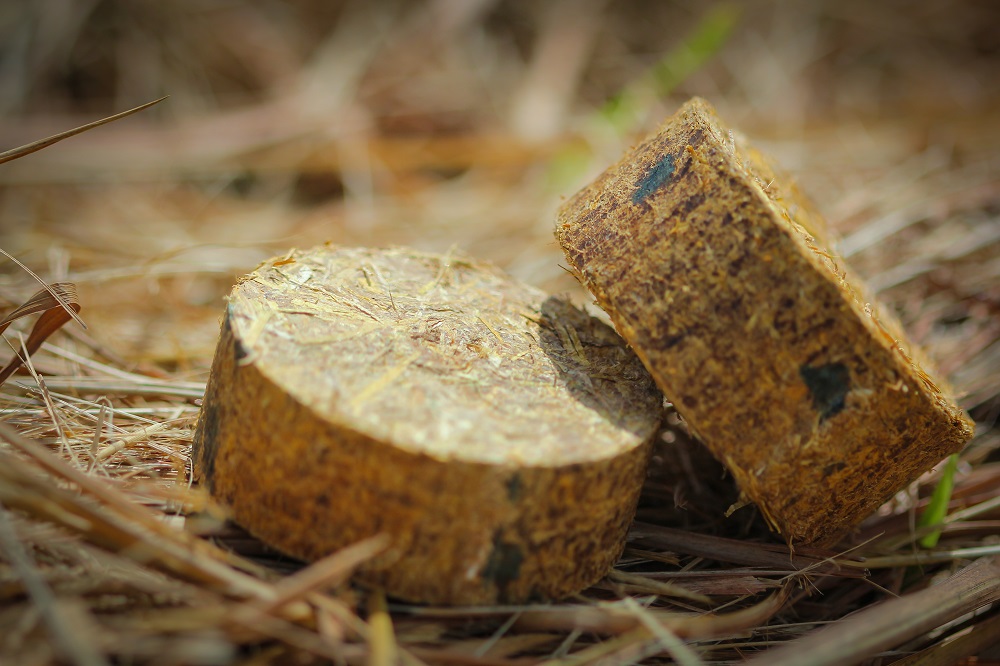In intensive flooded rice systems that predominate in much of Asia, the management of crop residues can be a problem. In the past, farmers manually harvested rice and plowed the rice straw back into their fields. However, increased mechanization and, in particular, the use of combine harvesters leave more rice straw that is difficult to plow back into the soil.
In intensive flooded rice systems that predominate in much of Asia, the management of crop residues can be a problem. With two or three crops grown each year, there is not enough time for the residues to break down and be incorporated into the soil. The Philippines produces approximately 15 million tons of rice per annum and this generates about 11 million tons of rice straw. In the past, farmers manually harvested rice and plowed the rice straw back into their fields. However, increased mechanization and, in particular, the use of combine harvesters leave more rice straw that is difficult to plow back into the soil.
The alternative of uprooting and collecting the straw is both labor intensive and increasingly expensive as labor in rural areas becomes scarcer. The easiest and cheapest method for farmers is to burn the straw in their fields. Farmers in the Philippines burn about 70% of the rice straw and this contributes to greenhouse gas emissions and air pollution, not to mention the loss of important nutrients from the soil. The problem that comes with the burning of straw, and its detrimental impact on the environment and human health, is not confined to the Philippines. The smog problems that affect Delhi in October and November have been linked to the burning of rice straw.
Almost two decades ago, the country enacted the Philippine Clean Air Act of 1999 to introduce stringent pollution standards and provide comprehensive policies to reduce, control, and prevent air pollution. The law not only covers the industrial and transportation sectors but also prohibits open-field burning, including that of rice straw. Although the legislative framework is important, it is seldom sufficient on its own to reduce the incidence of burning. There is also a need to provide incentives for farmers to reduce straw burning. Such incentives include the use of rice straw in ways that contribute to improved farmers’ livelihoods.
To meet this challenge, the International Rice Research Institute (IRRI), Philippine Rice Research Institute, and the Philippine Carabao Center recently started Sustainable rice straw management for bioenergy, food, and feed in the Philippines (RiceStrawPH), a two-year project funded by the Department of Agriculture’s Bureau of Agricultural Research. This project aims to develop sustainable technologies and management practices for rice straw that include the production of bioenergy, mushrooms, and fodder for livestock.
- Rice straw can be used to produce electricity and heat. It is used on its own or mixed with other biomass materials in direct combustion. The use of combustion boilers and steam turbines produces electricity and heat. The by-products include ash, which can be used in the construction of roads. Challenges exist, however, not least that the high content of ash, alkali, and potassium in the rice straw can damage parts of the combustion boilers.
- Mushrooms can break down organic material that other microorganisms cannot decompose. Many types of mushrooms grow well on compost that comes from rice straw. Farmers can generate income from mushroom production. Furthermore, the organic matter that remains after collecting the mushrooms can be used as fertilizer on farmers’ fields. An important consideration is not to flood the market so that supply outstrips demand and the price drops so much that mushroom production becomes uneconomical for farmers.
- Rice straw has limited nutritive value because of low digestibility and low crude protein levels but it can still be used as a replacement for part of the forage for cattle, sheep, and goats. In addition, much variation exists in the nutritional quality of rice straw and some varieties have higher crude protein levels. The stems of rice straw have lower silica content than the leaves, thus making them more digestible. Hence, the rice crop should be cut as close to the ground as possible when the straw is used as livestock feed. Rice straw can also be treated with urea to make it more nutritious.
Characteristic of IRRI’s rice science for development is the establishment of alliances with key national and international institutions. The RiceStrawPH project will contribute to an inclusive and rice-secure Philippines. Through this project, IRRI is again demonstrating its commitment as a strong partner of the Philippine government in nation-building by creating a vibrant agricultural economy for the Filipino people.
____________
Dr. Hellin leads the Sustainable Impact Platform at IRRI.
